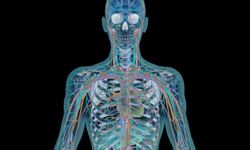One out of every five Americans -- that's about 50 million of us -- suffers from neurological damage [source: National Institute of Neurological Disorders and Stroke]. Neurological damage is damage that's occurred to the nervous system, including the brain, spinal cord and nerves, whether through injury, infection or disease. This type of damage can cause problems with everything from moving and speaking to swallowing and breathing, as well as changes in memory, mood and sensory perception.
Some of the more common diseases that affect the nervous system include muscular dystrophy (a neurogenetic disease), cerebral palsy (a developmental disorder), Parkinson's disease (a degenerative disease), stroke (a cerebrovascular disease), convulsive disorders, metabolic diseases, infectious diseases, trauma and brain tumors [source: National Institute of Neurological Disorders and Stroke]. But what do you know about pheochromocytomas? Or ataxia? There are more than 600 types of neurological disorders, but we're here to cover some you might not know about: five rare conditions that cause damage to your nervous system.
Advertisement
